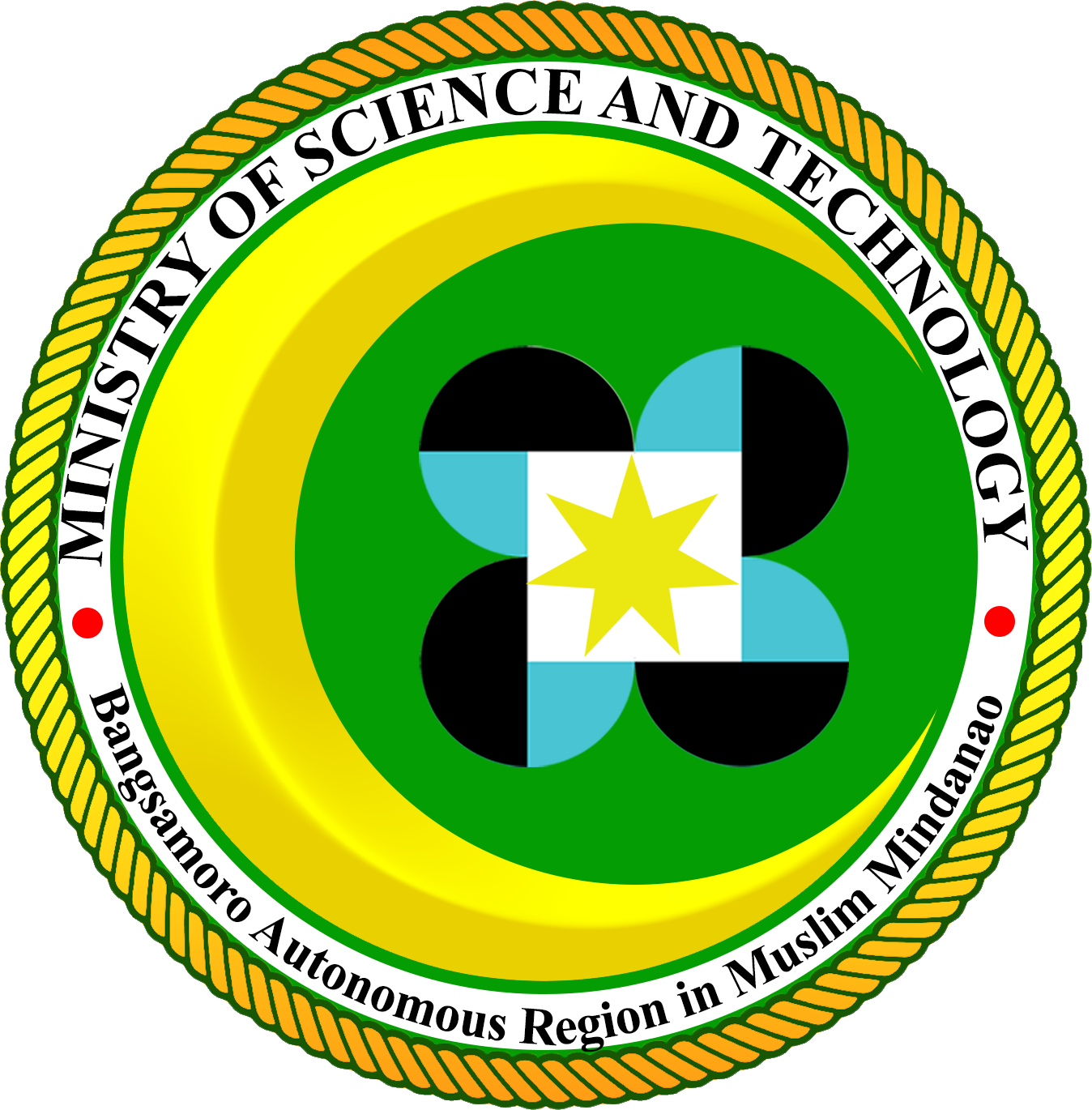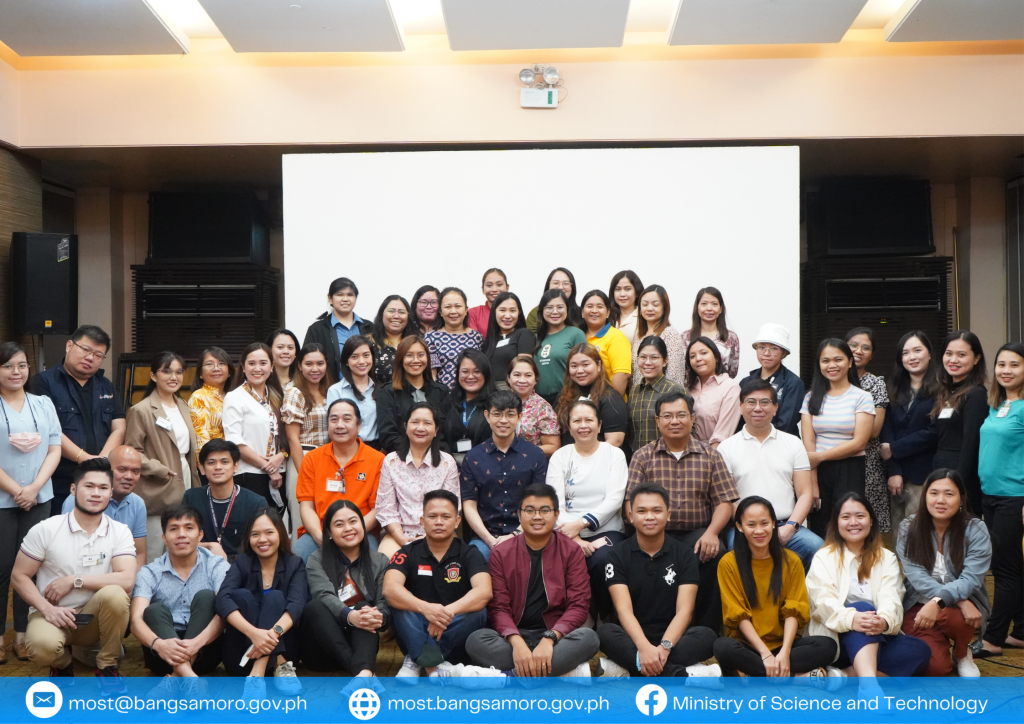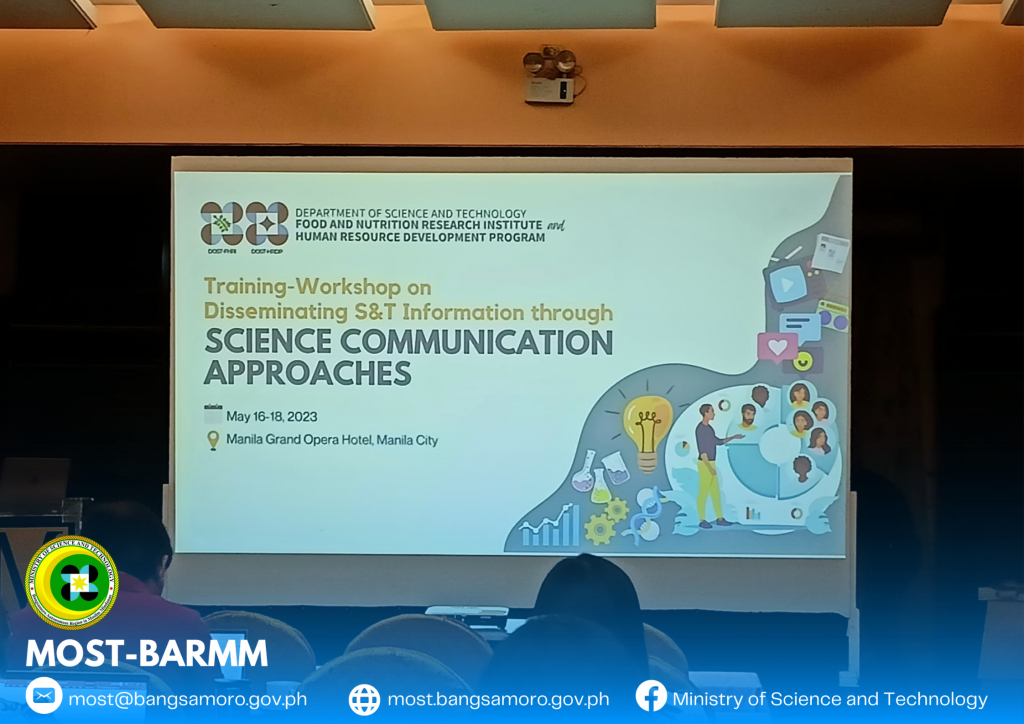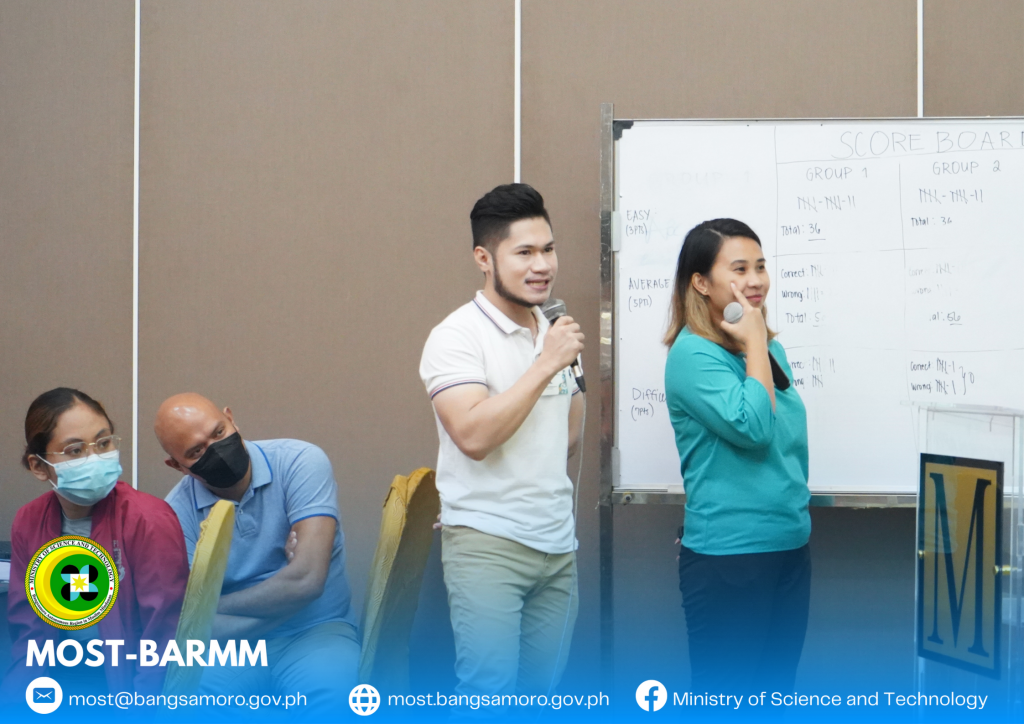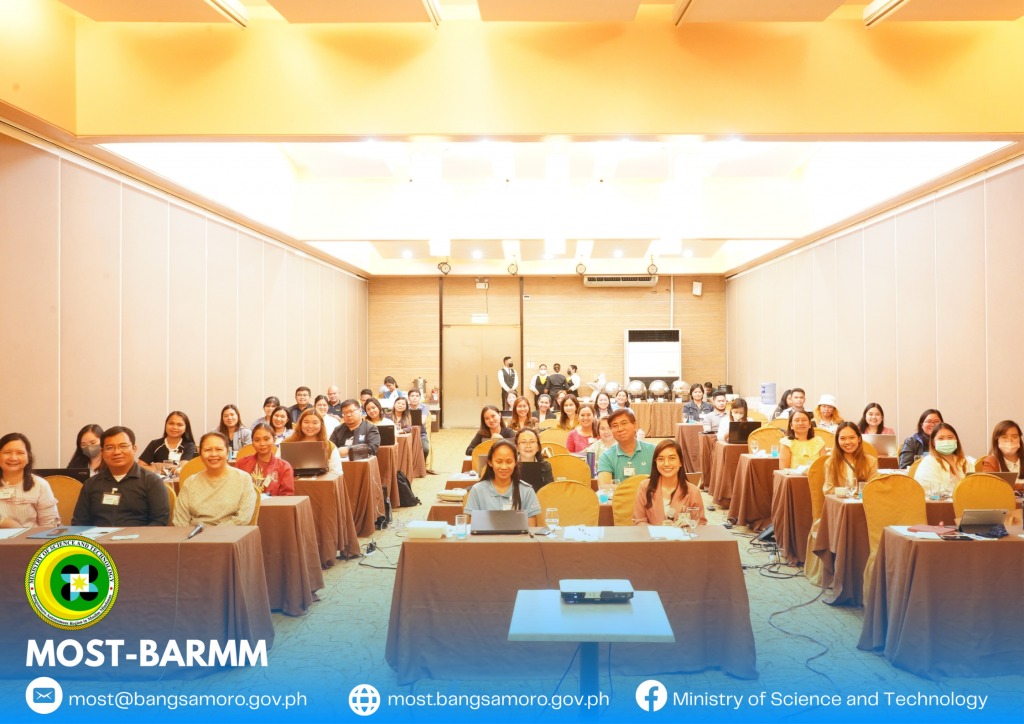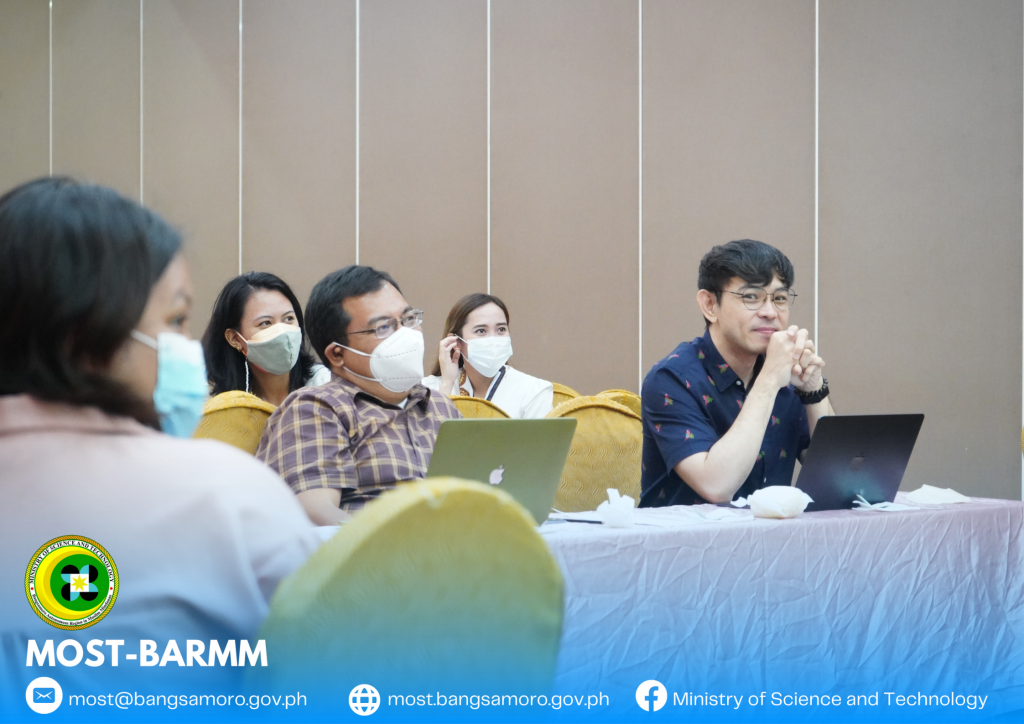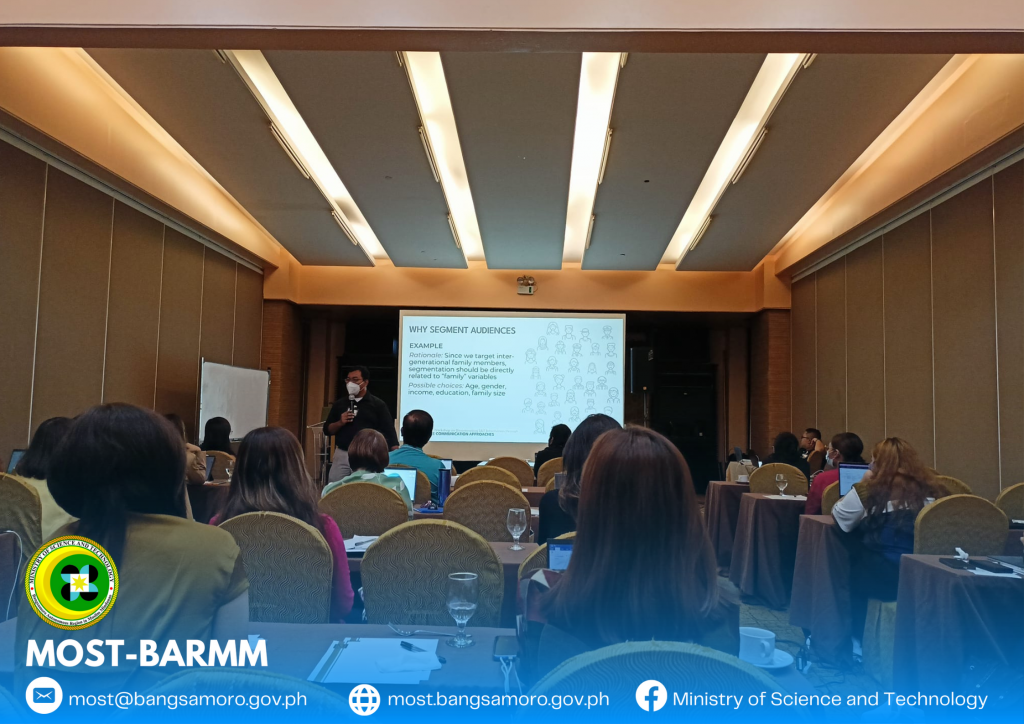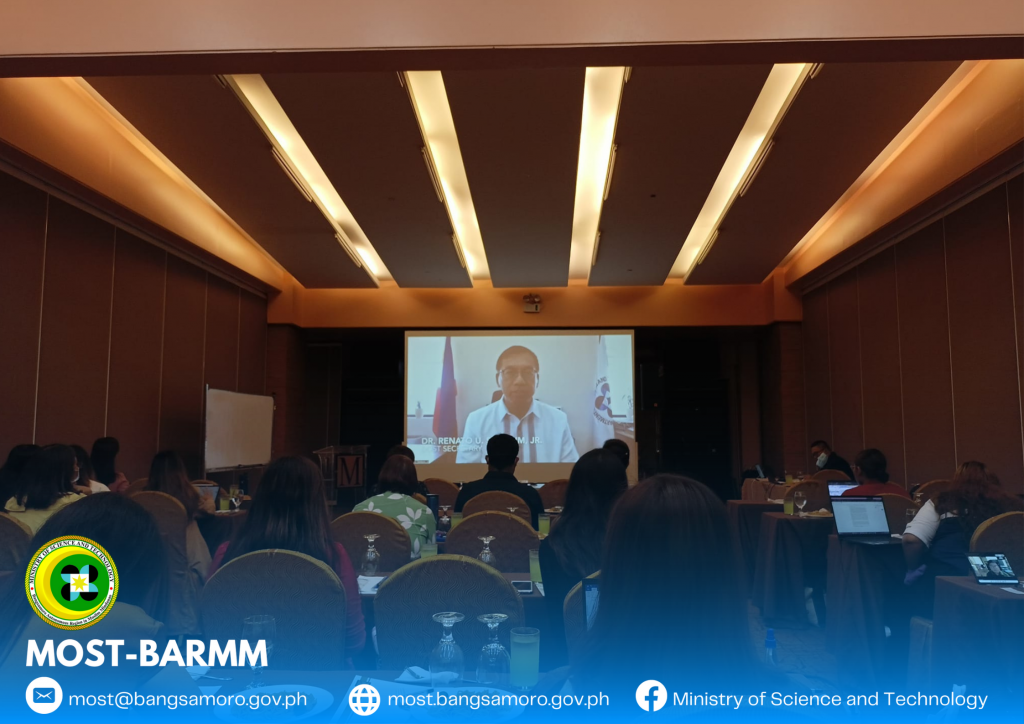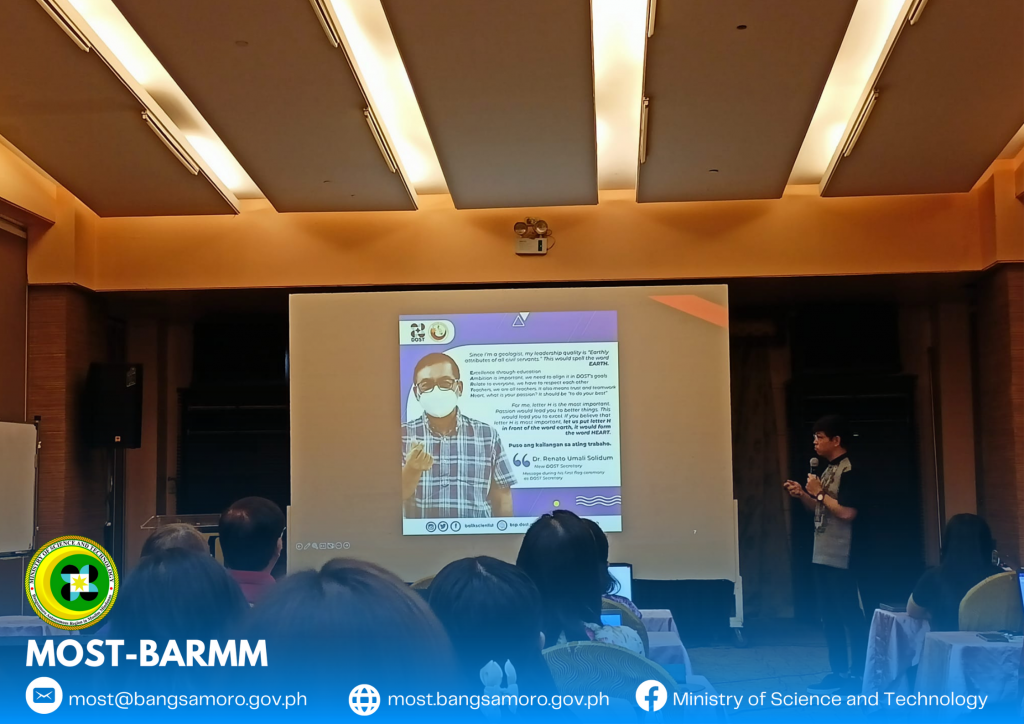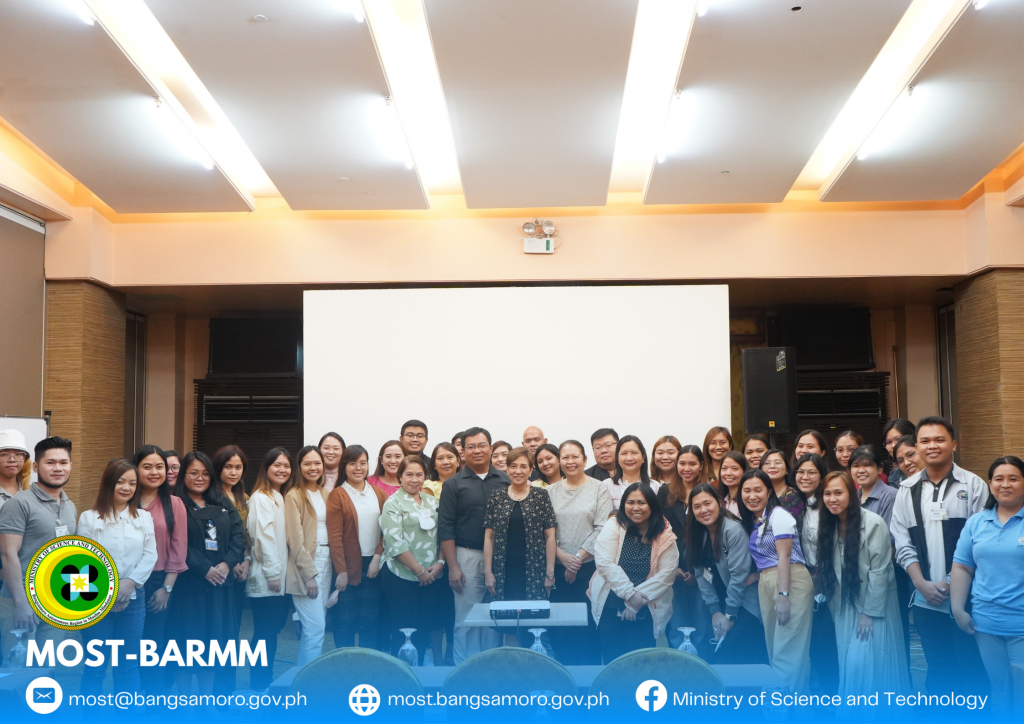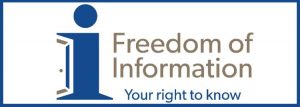To communicate science information effectively and counter fraudulent S & T news, the Bangsamoro S & T Ministry, represented by Mr. Almansur O. Mokamad, Information Officer III, attended and participated in the training workshop on Disseminating S & T Information through Science Communication Approaches held at the Manila Grand Opera Hotel, Manila City.
On May 16-18, 2023, about fifty (50) participants from other regions and attached agencies participated in the activity spearheaded by DOST – Food and Nutrition Research Institute (FNRI) and Human Resource Development Program (HRDP).
The training workshop was designed to train information officers and communication specialists of DOST agencies and regional offices on the fundamentals of audience research in science communication and audience-centered science storytelling techniques focused on countering fraudulent S&T news and information.
The program started with a welcome address and message from DOST key officials: Dr. Milaflor S. Gonzales, OIC DOST-FNRI, Dr. Leah J. Buendia, Undersecretary for Research & Development, Engr. Sancho A. Maborang, USec for Regional Operations, and a virtual inspirational message from Dr. Renato U. Solidum, Jr., DOST Secretary.
Dr. Leah J. Buendia, DOST USec for R & D, said that this training is necessary for science communicators to adopt learning and practices on communicating science approaches in an effective and efficient way.
“It is a necessary activity for science communicators to acquire learning and counter false S & T information; when we communicate the latter, we can help more S & T inclusive and encouraging to combat fake news and misinformation,” Dr. Buendia shared.
The activity’s topics were centered on Audience Research in Science Communication, and Audience-Centered S & T Storytelling resourced from Asst. Prof. Garry Jay Montemayor of the Department of Science Communication, University of the Philippines – Los Baños (UPLB), and Mr. Nicolai V. Reyes, Vice President and Managing Partner, Rebel Marketing.
Prof Garry shared the importance of audience research in science communication. He highlighted audience segmentation’s significance in effectively targeting specific audiences and tailor-fitting targets.
“You need to segment the general public into specific audiences to maximize resources in achieving the greatest outcomes possible. After segmenting the audience, we could target a particular audience to which intervention could be directed,” Prof said.
On the other hand, Mr. Reyes discussed the importance of audience storytelling by creating narratives and other formats to communicate scientific information effectively.
He also discussed fake news, misinformation, disinformation, mal-information and how to address, mitigate, spot it, and what can be done against it.
Mr. Almansur Mokamad said that the activity is so relevant and timely that the knowledge and skills gained during the training workshop would enhance capabilities to disseminate S & T news and information efficiently, bringing effective science communication to the community.
“Being the representative of MOST and as the information and communication officer, I was delighted to join the activity because the learning we have gained apply to our daily tasks as we generate news, updates, and information for the general public. The latter must be segmented to target the audience effectively and create efficiency in output and outcome,” Mokamad said.
He also added that there are fundamentals of communication gained during the training that would enhance the Ministry’s Information and Communication Section (ICS) on disseminating news stories through effective science communication approaches.
“We also have experts and non-experts as our audiences, and it’s a challenge for us to effectively convey the message and information easily understood since S & T information has a lot of technical terms and science jargon. In this training, we acquired learning on formats and strategies to easily provide information based on the faction of audiences and what communication format, segmentation best suited for different communication researches.”
“We have also learned techniques and ways to counter/mitigate misinformation and disinformation as science communicators of our respective agencies. We need to intensify the reliability of the news and information we provide for our audiences to trust the information provided and other effective ways.” Mokamad added.
The activity ended with a closing message from Dr. Imelda Angeles-Agdeppa, DOST-FNRI Director IV and Scientist IV that the training provided was at aim to hone the skills of science communicators such as information officers, communication specialists, public relations officers, and others to gain knowledge and practices to better communicate science in a more effective and creative way.
ctto: DOST-FNRI
#MOSTUpdates2023
[Information and Communication